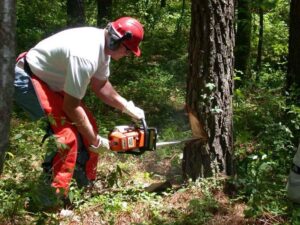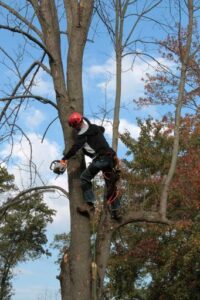Do your trees appear a little overgrown and wild? Time to think about loping! Pruning your trees on a regular basis encourages healthy growth as well as improves their aesthetic appeal. Lopping trees is a crucial component of appropriate tree maintenance because it has so many advantages, from increasing light exposure to lowering the chance of branches falling. This post will go over all the benefits of routinely lopping your trees and why it should be included in your gardening routine, whether you’re an experienced gardener or a novice. So let’s get started!
What advantages come from periodically pruning your trees?
The majority of house and business owners are aware that in order to maintain a tree’s health and aesthetic appeal, regular lopping is required. With lopping, branches that are dead or dying are removed, and the canopy is thinned to let more light and air reach the inner branches. Regular lopping has a variety of advantages in addition to enhancing the appearance of your trees.

The ability to reduce storm damage is one of the key advantages of routine tree trimming. In strong winds, overhanging branches can behave like sails, placing undue stress on the tree stem and raising the risk of the tree being uprooted or split in half. You can lessen the chance of storm damage by routinely trimming these branches.
Regularly lopping your trees can also increase their growth rate, which is another advantage. A tree’s canopy shuts out sunlight and prevents the development of new leaves and branches when it is too dense. The tree may eventually die as a result of this. Regular canopy thinning encourages healthy development by allowing more light and air to reach the tree’s interior.
The health of your soil can also be enhanced by routine lopping. When a tree’s roots are restricted by overgrown branches, it cannot perform its essential functions of aeration and drainage. Waterlogging and soil erosion may result from this. on a regular basis
How often should trees be lopped?
Most people believe that a tree should only be cut down when it begins to obstruct power lines or appears to be about to topple over. But routinely pruning your trees might actually be very advantageous. The act of lopping encourages new growth, maintains the health of the tree, and may even improve the visual appeal of the tree.
So how frequently should trees be lopped? Aim for lopping them every three to five years. This will guarantee their health and ability to create new growth. The tree may develop sick or possibly die if you wait too long between lopping.
Which kind of tree is ideal for lopping?
When it comes to choosing the right kind of tree for lopping, there is no one size fits all solution, as with most things in life. Consultation with a qualified tree lopper or arborist is the best approach to decide which kind of tree is most appropriate for your lopping requirements. They’ll be able to evaluate your particular circumstances and offer suggestions based on their knowledge and experience.

How to properly lock your trees
Keep your trees pruned and free of dead branches if you have any on your property. This not only helps your yard look better, but it also helps avoid any safety hazards. Here are some pointers for properly lopping your trees:
-Remove any unhealthy or dead branches first. They pose a risk to personal safety and spread illness to the tree’s healthy branches.
-Next, remove any branches that are growing into or rubbing against one another. This will aid in fostering healthy growth and guard against bark damage.
-Last but not least, trim back any branches that are dangling over your house or electrical lines. In the event of a storm or strong winds, these can pose a major safety risk.
In conclusion, careful tree pruning is necessary to maintain the health and safety of your trees. Regular pruning can assist preserve the tree’s shape and guard against pest and disease damage. Also, it can raise the value of your garden overall while also enhancing its aesthetic. With all these advantages in mind, it is simple to understand why routine pruning needs to be a part of every homeowner’s routine tree management regimen.



